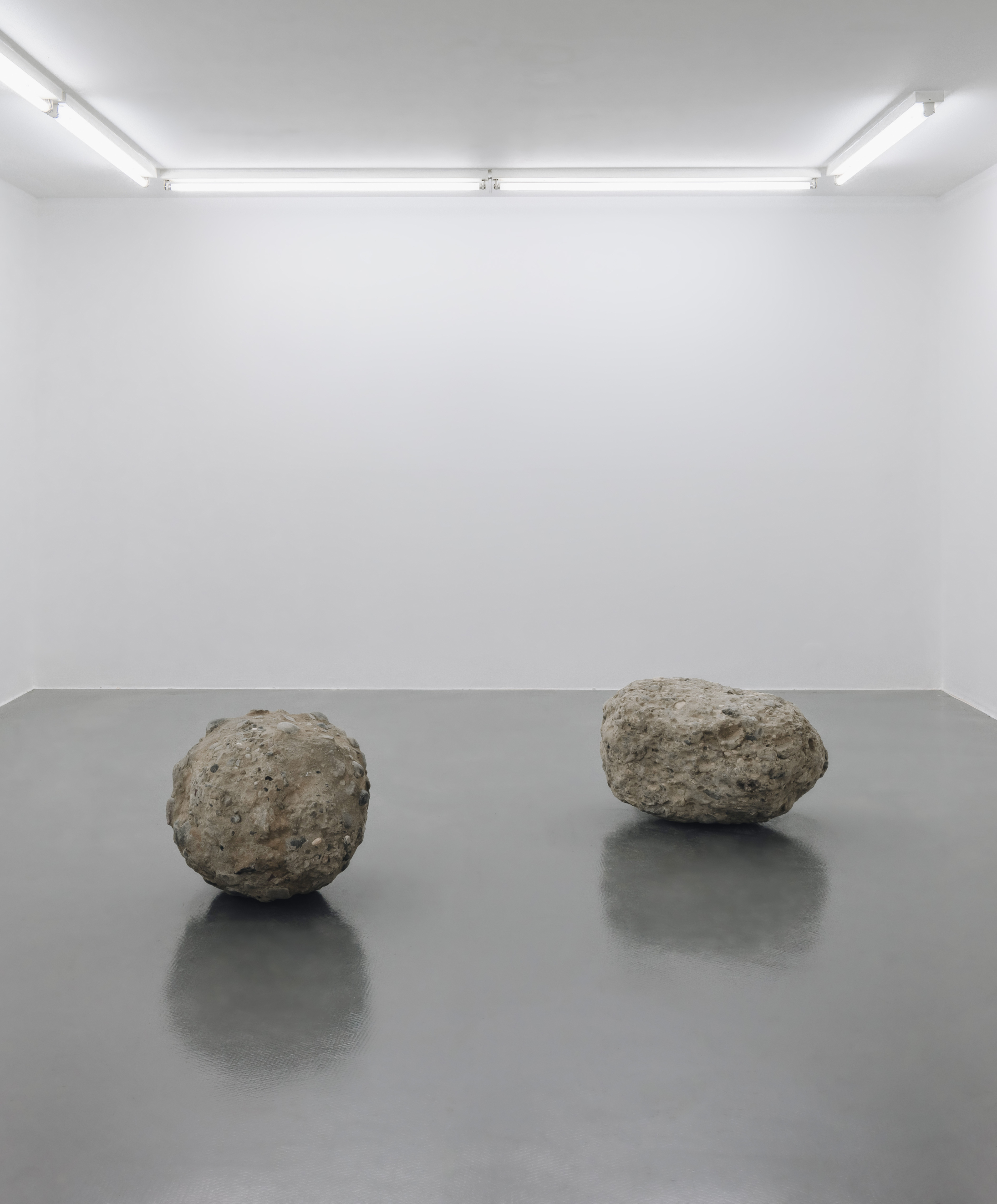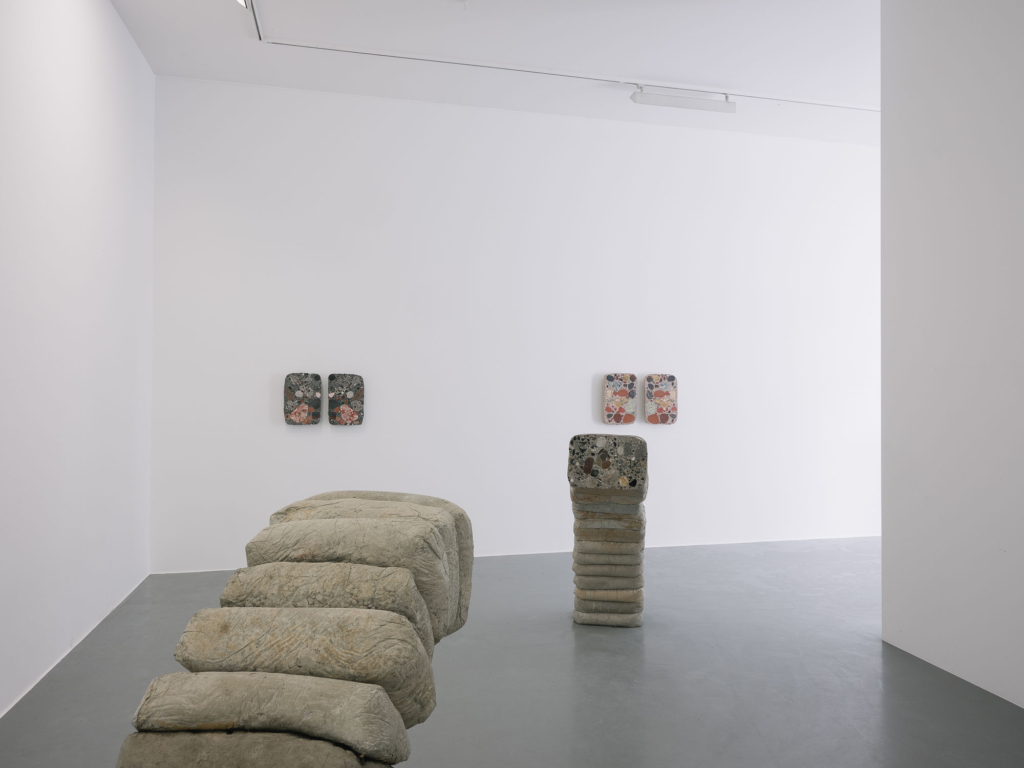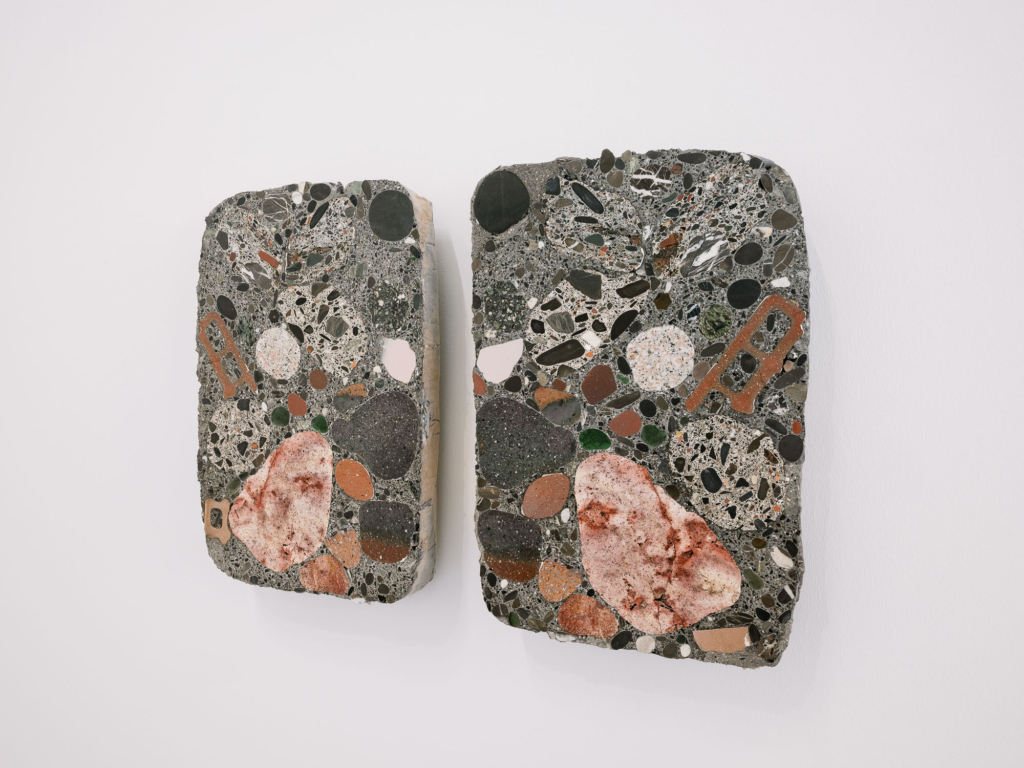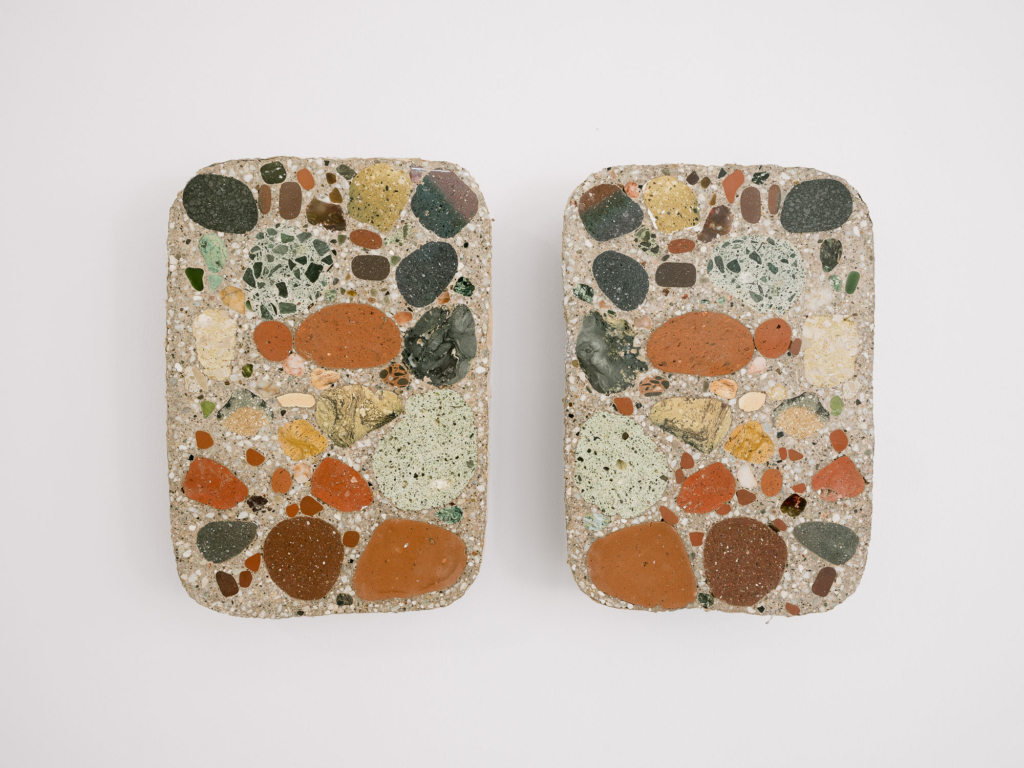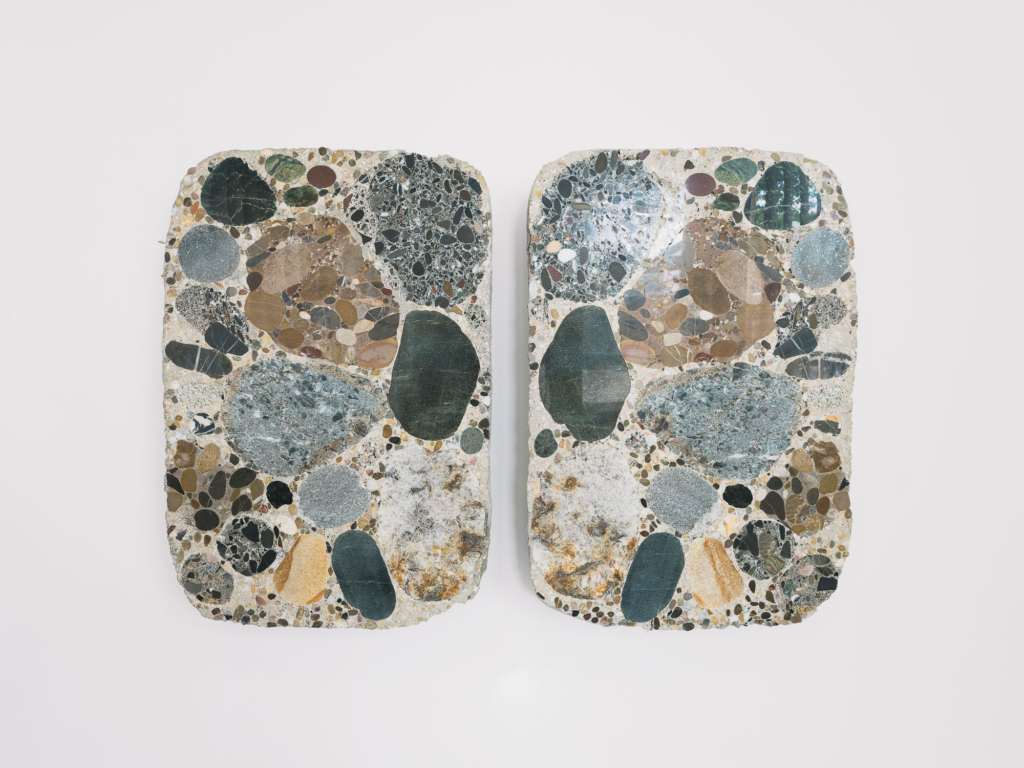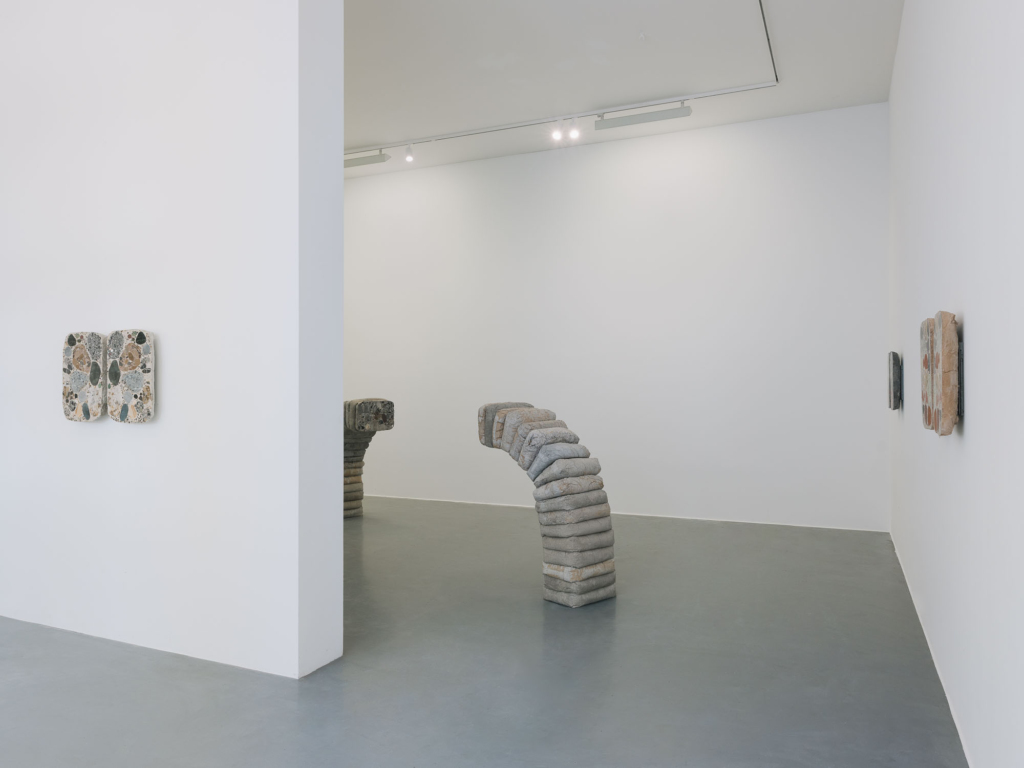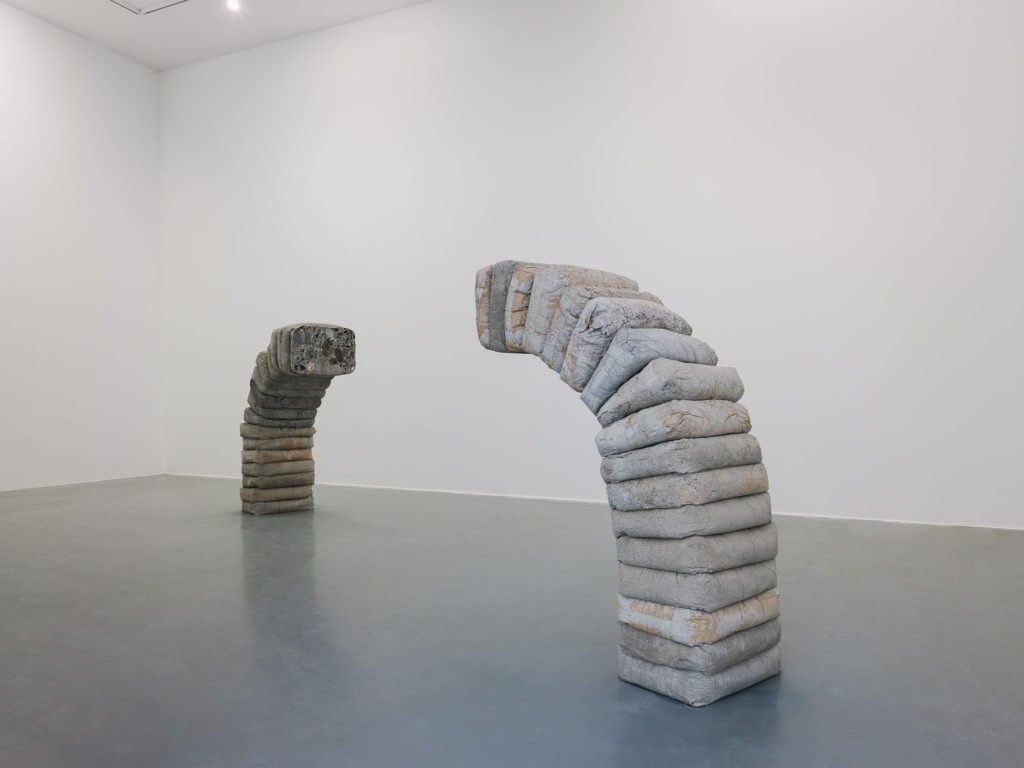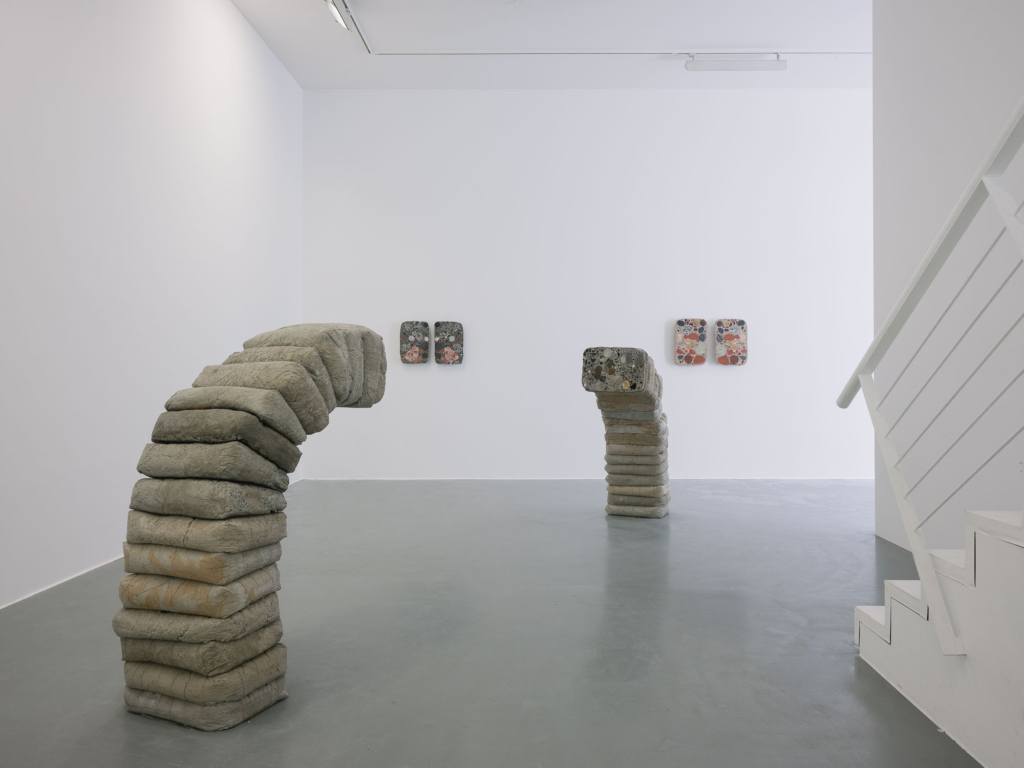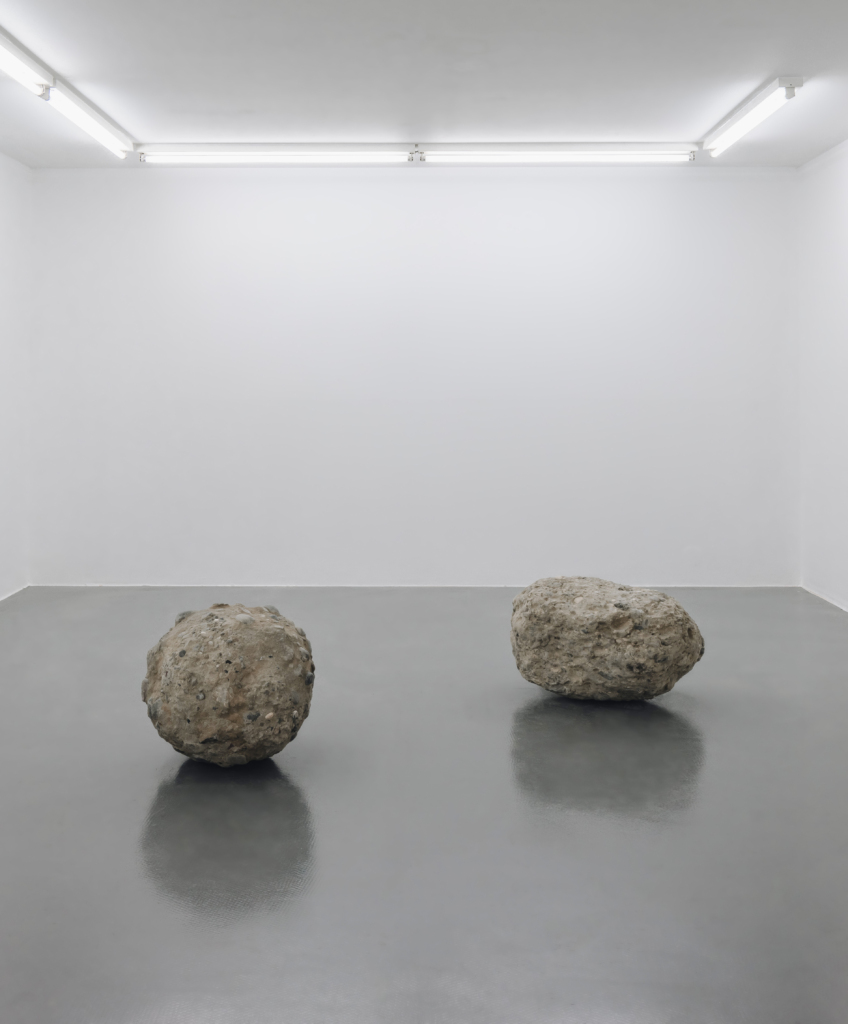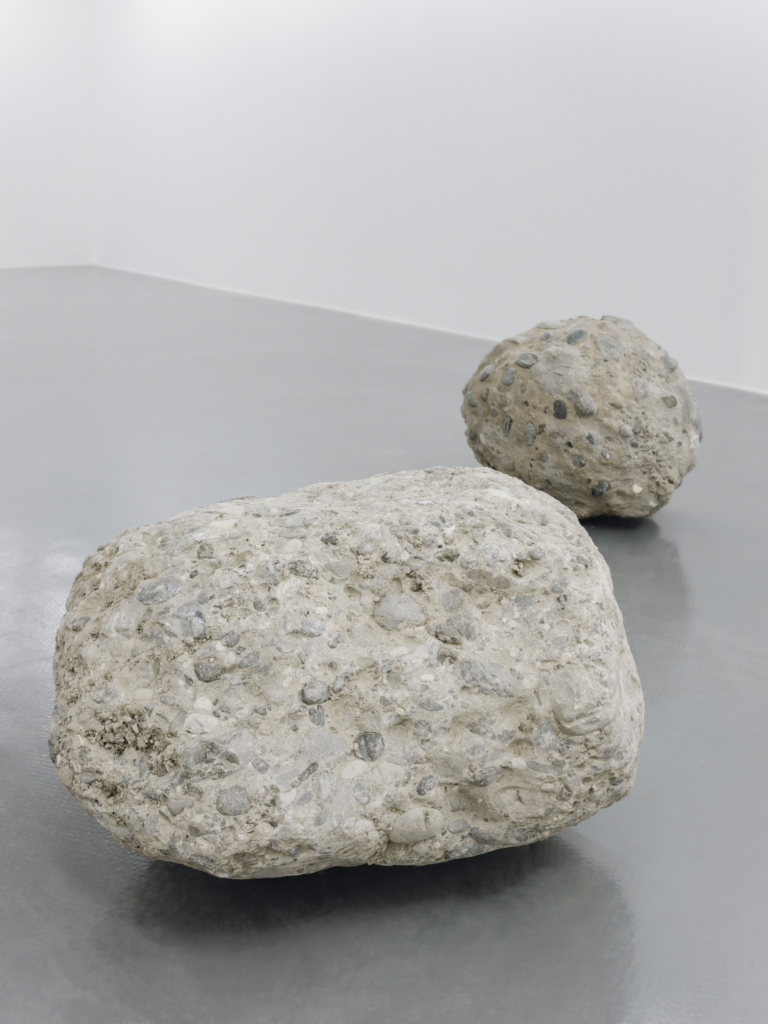Super Vivaz
From shore to shore
From Shore to Shore responds to these trends, showcasing works created for the Kunstverein by the artist duo Super Vivaz, who explore the material cycles of gravel and concrete in their exhibition.
In the eponymous novel by Thomas Bernhard from 1982, concrete always plays a peripheral role: as a street we walk on and fall onto, as the apartment we live in, and as the gravestone that remembers. We are born between concrete, live in it, and die in it; in Bernhard’s work, life becomes existence in otherworldly concrete burial boxes. The omnipresence of the material is depicted in the author’s characteristic morbid style.
Concrete is indeed everywhere. Reinforced concrete is aesthetic, cost-effective, versatile, and resilient; high-performance infrastructure like tunnels and highway bridges would be unimaginable without this man-made material. While its affordability promises accessible housing, it can also lead to hasty and shortsighted construction practices.
From Shore to Shore responds to these trends, showcasing works created for the Kunstverein by the artist duo Super Vivaz, who explore the material cycles of gravel and concrete in their exhibition. Unused bags of concrete are placed in the exhibition space. They are sculptures that support themselves. Although they appear as if they might collapse in on themselves at any moment, they stand stable on the floor of the art association. The bags contain expired concrete. When stored dry, bags of concrete are only usable for a maximum of 12 months after the filling date; if they are not used within this timeframe, they must be disposed of.
Titled Alte Säcke, this work is also currently displayed as a sculptural installation in the occupied section of the Altdorfer Wald near Ravensburg.
Super Vivaz employs found objects to highlight societal issues. Their works not only pose pressing questions about the relationship between individual and collective responsibility, but they are also site-specific, engaging deeply with the locations of their art. This approach allows the duo to connect regional references to global concerns, such as the forest as a groundwater recharge area or the ruins of utopian concrete buildings as a worldwide phenomenon. Their work Kernschnitteexemplifies this method: it features fragmented slices that examine rock, grinding it down and transforming it into polished surfaces. This process blurs the boundaries between the artificial and the natural, resulting in abstract terrazzo images. The apparent transparency achieved by revealing the attractive interior raises questions about the originality of the displayed objects: as viewers, we constantly wonder whether what we see is concrete or a natural conglomerate pebble. The work Menschgemachter Stein displays two rocks that have been rounded over time by flowing water. Visually, the two pieces are hardly distinguishable; however, one is made of concrete that is at most 100 years old, while the other is a conglomerate rock known as “Nagelfluh,” which is several million years old. This term is colloquially referred to as “God’s Concrete” in southern Germany.
The works of Super Vivaz adorn the concrete floor of the exhibition, merging seamlessly with the concrete walls. The Kunstverein itself bears the marks of time’s passage. The deconstruction, conversion, repair, and maintenance of concrete are costly, leading to dilapidated buildings and underutilized structures becoming common sights in cities worldwide. In a quote from Thomas Bernhard’s Beton, protagonist Anna Härdtl remarks that she feels cold because the concrete is inadequate—poorly maintained and cracking. This raises essential questions: How can we construct in a resource-efficient and circular manner? How do we utilize and maintain what already exists? What steps can we take to simplify our public and private spaces? And at what cost?
Super Vivaz, comprised of Lina and Jo Baltruweit, studied at the Akademie der Bildenden Künste Stuttgart under Mariella Mosler and Birgit Brenner. They have been collaborating as Super Vivaz since 2019 and graduated together in 2024. Their work has been featured in the exhibition Warnung vor dem Hund at Galerie Stadt Sindelfingen (2022) and in group exhibitions at the Taipei Fine Arts Museum, art Karlsruhe, Sammlung Froehlich, and Kunsthalle Tübingen.
Curator: Marlene A. Schenk
